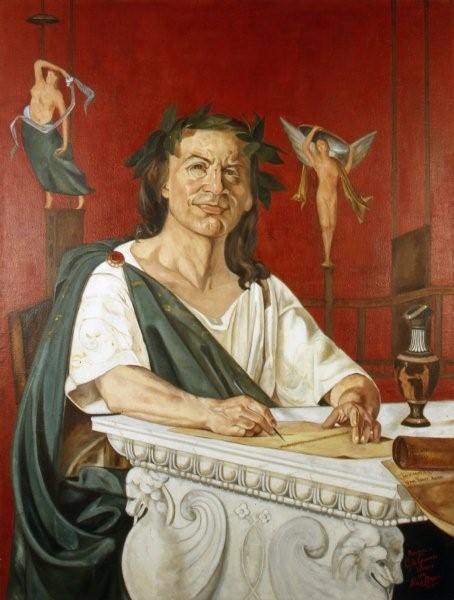Tu ne quaesieris (Odes, Book 1, Poem 11) – Horace – Ancient Rome – Classical Literature
(Lyric Poem, Latin/Roman, c. 23 BCE, 8 lines)
Introduction | Back to Top of Page |
 “Tu ne quaesieris” (“Do not ask”) is the most famous of the odes of the Roman lyric poet Horace, published in 23 BCE as Poem 11 in the first book of Horace’s collected “Odes” or “Carmina”. The poem takes the form of a short rebuke to a woman, Leuconoë, who is worrying about the future, and uses agricultural metaphors to urge us to embrace the pleasures available in everyday life rather than relying on remote aspirations for the future. The poem is often also known as “Carpe Diem” for the famous phrase in the final line, or sometimes as “Ad Leuconoem” for its initial dedication.
“Tu ne quaesieris” (“Do not ask”) is the most famous of the odes of the Roman lyric poet Horace, published in 23 BCE as Poem 11 in the first book of Horace’s collected “Odes” or “Carmina”. The poem takes the form of a short rebuke to a woman, Leuconoë, who is worrying about the future, and uses agricultural metaphors to urge us to embrace the pleasures available in everyday life rather than relying on remote aspirations for the future. The poem is often also known as “Carpe Diem” for the famous phrase in the final line, or sometimes as “Ad Leuconoem” for its initial dedication.
Synopsis | Back to Top of Page |
The poet advises Leuconoë not to question what fate the gods have in store for her, nor to rely on astrological predictions as the ancient Babylonians used to. Rather, she should just submit and make the best of whatever years are granted us, drinking wine and living life to the full with no thought for the future, because, even as she reads the poem, valuable time is passing.
Analysis | Back to Top of Page |
Horace developed his “Odes” in conscious imitation of the short lyric poetry of Greek originals such as Pindar, Sappho and Alcaeus. His genius lay in applying these older forms, largely using the ancient Greek Sapphic and Alcaic metres, to the social life of Rome in the age of Augustus. The first three books of the “Odes”, including this one, were published in 23 BCE, with the earliest positively-dated poem in the collection (“Nunc est bibendum”) dating from around 30 BCE. We have no exact date for the writing of this particular poem.
It is addressed to Leuconoë, an unknown younger female companion (probably not her real name, as it translates as something like “empty head”). It seems likely from hints in the poem that, at the time of its writing, Horace and Leuconoë were together in a villa on the shores of the Bay of Naples (the “Tyrrhenian Sea”) on a wild winter’s day.
There is a definite music in the poem, especially when read aloud, and Horace manages to conjure vivid imagery in the sparest, most economical phrases. It closes with the famous line “carpe diem, quam minimum credula postero” (“seize the day, trusting tomorrow as little as possible”).

Resources | Back to Top of Page |
- English translation by John Conington (Perseus Project): http://www.perseus.tufts.edu/hopper/text.jsp?doc=Perseus:text:1999.02.0025:book=1:poem=11
- Latin version with word-by-word translation (Perseus Project): http://www.perseus.tufts.edu/hopper/text.jsp?doc=Perseus:text:1999.02.0024:book=1:poem=11

